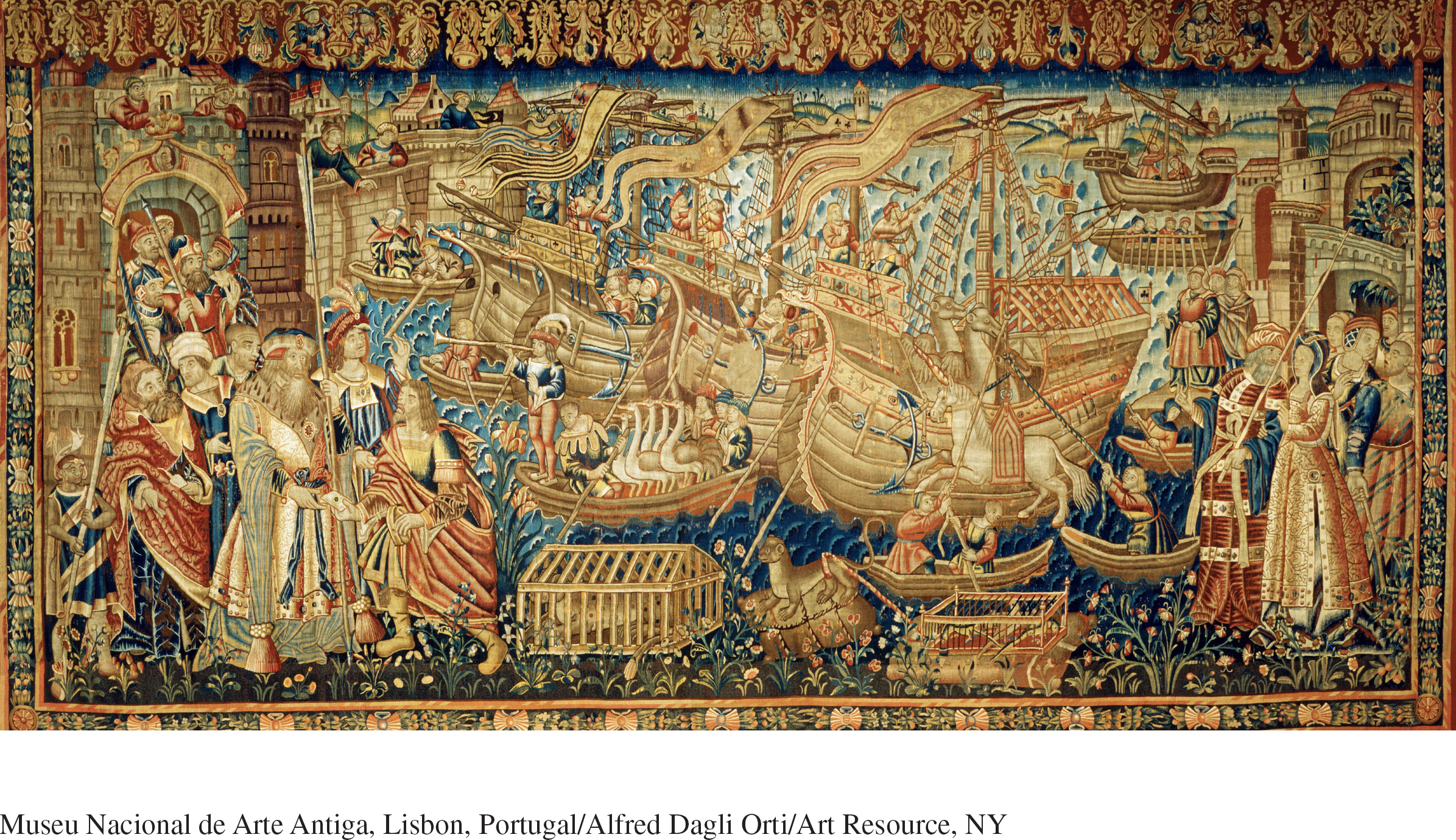Source 12.3: Celebrating da Gama’s Arrival in Calicut
The extraordinary feats of navigation accomplished by Portuguese sailors gave their kingdom a new prominence on the European stage. Portuguese rulers publicized their accomplishments by displaying the exotic products from the East to a European public hungry for information about distant lands. Perhaps no single item brought back from India created a greater stir than the live rhinoceros that arrived in 1515. Crowds flocked in amazement to view a beast that had not been seen in Europe for over 1,000 years and was only known through an account by the ancient Roman scholar Pliny.
The most systematic effort to associate the Portuguese monarchy with the opening of the East took the form of a twenty-
The panel reproduced here depicts the arrival of da Gama at Calicut. The scene includes accurate renderings of Portuguese vessels anchored in the port; however, the buildings and town gates of Calicut are more fanciful, constructed out of distinctly European, not Indian, architectural elements. In the foreground to the left, da Gama presents a letter from his monarch to the ruler of Calicut. In the center of the scene, the Portuguese are in the process of unloading from their vessels exotic animals, including ostriches, wild cats, and even a unicorn. To the right, a great crowd dressed in garments reminiscent of European styles gathers to view these curiosities, very much like the Europeans who gathered to view the Indian rhinoceros unloaded in Lisbon harbor in 1515.
Questions to consider as you examine the source:
- In what ways does this image reflect the written account in Source 12.2? In what ways does it differ?
- How does this tapestry serve the purposes of King Manuel of Portugal, who commissioned it?
- What can you discern about European knowledge of India from this image?
The Arrival of da Gama at Calicut
